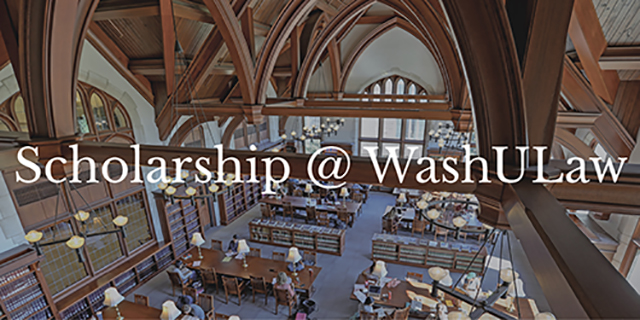
Scholarship@WashULaw
Document Type
Article
Publication Date
2012
Publication Title
Texas Law Review
Abstract
When the Supreme Court in District of Columbia v. Heller declared that the Second Amendment protects an individual right to keep and bear arms, it set atop the federal judicial agenda the critical task of elaborating the new right’s scope, limits, and content. Following Heller, commentators routinely draw upon the First Amendment’s protections for expressive freedom to support their proposals for Second Amendment doctrine. In this article, Professor Magarian advocates a very different role for the First Amendment in explicating the Second, and he contends that our best understanding of First Amendment theory and doctrine severely diminishes the Second Amendment’s legal potency. Professor Magarian first criticizes efforts to draw direct analogies between the First and Second Amendments, because the two amendments and their objects of protection diverge along critical descriptive, normative, and functional lines. He then contends that the longstanding debate about whether constitutional speech protections primarily serve collectivist or individualist purposes models a useful approach for interpreting the Second Amendment. Under that approach, the language of the Second Amendment’s preamble, which Heller all but erased from the text, compels a collectivist reading of the Second Amendment. The individual right to keep and bear arms, contrary to the Heller Court’s fixation on individual self-defense, must serve some collective interest. Many gun rights advocates urge that the Second Amendment serves a collective interest in deterring – and, if necessary, violently deposing – a tyrannical federal government. That theory of Second Amendment insurrectionism marks another point of contact with the First Amendment, because constitutional expressive freedom serves the conceptually similar function of protecting public debate in order to enable dynamic political change. Professor Magarian contends, however, that we should prefer debate to violence as a means of political change and that, in fact, the historical disparity in our legal culture’s attention to the First and Second Amendments reflects a longstanding choice of debate over insurrection. Moreover, embracing Second Amendment insurrectionism would endanger our commitment to protecting dissident political speech under the First Amendment. The article concludes that our insights about the First Amendment leave little space for the Second Amendment to develop as a meaningful constraint on government action.
Keywords
Second Amendment, First Amendment, Arms, Speech, Individual Rights
Publication Citation
Gregory P. Magarian, Speaking Truth to Firepower: How the First Amendment Destabilizes the Second, 91 Tex. L. Rev. 49 (2012)
Repository Citation
Magarian, Gregory P., "Speaking Truth to Firepower: How the First Amendment Destabilizes the Second" (2012). Scholarship@WashULaw. 238.
https://openscholarship.wustl.edu/law_scholarship/238

